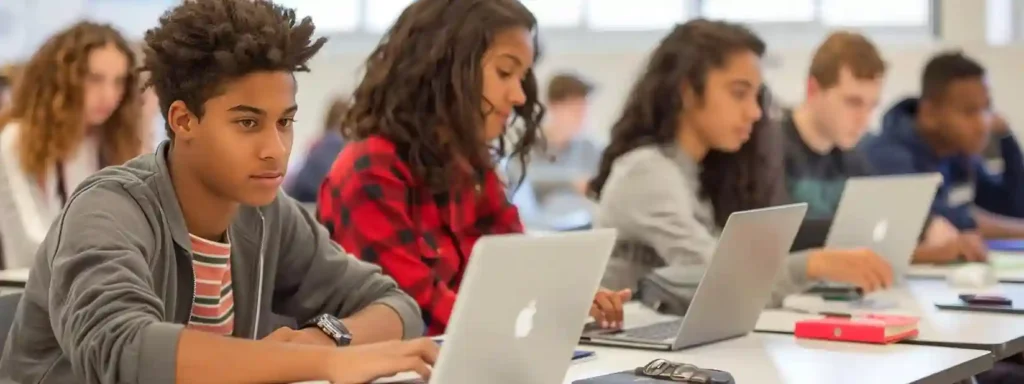Digital and Media Literacy Is More Urgent Than Ever
Digital and Media Literacy has never been more critical in an age flooded with AI-generated deepfakes and viral conspiracy videos designed to mislead. Can you spot what’s real and what’s not?
In a world where misinformation influences elections, public health, and even day-to-day decisions, digital and media literacy has become a life skill, not a luxury. It’s no longer enough to just use the internet—we must understand how it works, how messages are crafted, and how to think critically about what we consume and share.
This article is for anyone who uses the internet: parents guiding their kids, educators shaping young minds, and everyday citizens trying to make sense of the headlines. Whether you’re concerned about fake news, online scams, or biased content, you’re not alone—and this guide is for you.
In the sections ahead, you’ll learn:
- What digital and media literacy really means
- Why it’s more urgent than ever—especially in the U.S.
- How it can be taught in schools, practiced at home, and applied in daily life
- Tools and resources to help you and your community become smarter, safer media users
Let’s begin with the basics—because an informed mind is your best defense.
What Is Digital and Media Literacy?
Digital and Media Literacy refers to the essential skills needed to access, evaluate, create, and share content responsibly across digital platforms and media sources. In simple terms, it’s about knowing how to use technology wisely while thinking critically about the information it delivers.
While the two terms often go hand in hand, they focus on slightly different things. Digital literacy involves the technical know-how—how to navigate apps, search engines, and digital tools securely and effectively. Media literacy, on the other hand, is about understanding the messages we consume: Who created this content? What’s the motive? Is it fact, opinion, or propaganda?
In today’s screen-first society—where algorithms, influencers, and AI shape what we see and believe—digital and media literacy is essential for everyone, from schoolchildren to seniors. It empowers individuals to make informed decisions, avoid online traps, and participate in society with confidence and awareness.
Why Digital and Media Literacy Is More Urgent Than Ever
In today’s hyperconnected world, the ability to discern truth from manipulation is no longer optional—Digital and Media Literacy is a civic survival skill.
The Rise of Misinformation and Deepfakes
Misinformation spreads faster than facts. With the rise of AI-generated deepfakes and fabricated news, it’s become dangerously easy to deceive millions with false visuals and quotes that look authentic. From politics to health care, lives and communities are impacted by lies disguised as truth.
Social Media’s Grip on Public Opinion
Platforms like Facebook, TikTok, YouTube, and X (Twitter) shape what people believe—even when the information isn’t verified. Algorithms prioritize engagement, not accuracy. Without digital and media literacy, users unknowingly amplify false narratives that divide, mislead, or radicalize.
The Collapse of Trust in Traditional News
Trust in media has plummeted in the U.S. Many no longer know which sources are credible or feel overwhelmed by conflicting headlines. As trust erodes, people turn to influencers or echo chambers—where facts take a backseat to emotion and bias.
The Mental and Emotional Toll
Constant exposure to unfiltered, emotionally charged content can leave us anxious, angry, and confused. Doomscrolling, conspiracy rabbit holes, and manipulative headlines contribute to stress and misinformation fatigue. Digital and media literacy helps people set boundaries, recognize emotional manipulation, and regain control over their online experience.
How the U.S. Is Falling Behind in Digital and Media Literacy
While other nations are embedding digital and media literacy into national curriculums, the United States is lagging behind, leaving millions vulnerable to misinformation, manipulation, and digital harm.
Lack of Standardized Education Programs
Unlike countries such as Finland and the Netherlands, the U.S. has no national standard for digital and media literacy education. This means whether students receive critical thinking training about online content depends largely on individual school districts or even specific teachers. The result? A patchwork of instruction with major knowledge gaps.
Urban vs. Rural Divide
Many rural and underserved schools struggle with limited funding, fewer resources, and inadequate internet infrastructure. While students in affluent, urban schools might learn how to critically evaluate online sources, students elsewhere may barely get access to digital tools—let alone instruction in responsible media use.
Political Polarization
Digital and media literacy often overlaps with discussions about news, truth, bias, and trust in institutions—all of which have become politically charged. This tension makes it harder for schools to adopt unbiased, effective curricula. In some areas, even teaching students how to recognize misinformation is viewed through a partisan lens.
Digital and Media Literacy in U.S. Classrooms: What’s Missing?
Despite growing awareness of online misinformation and digital harm, Digital and Media Literacy in U.S. classrooms remains inconsistent, underdeveloped, and often optional.
Outdated or Optional Media Literacy Units
Many schools still treat media literacy as an elective or bundle it into outdated health or computer classes. These brief units rarely address the complex media environment students now navigate daily—one filled with clickbait, algorithms, AI-generated content, and targeted disinformation.
Teachers Often Under-Equipped or Unsupported
Most educators recognize the importance of digital and media literacy, but few receive formal training on how to teach it. Without access to up-to-date materials, lesson plans, or professional development, teachers are left to figure it out on their own—if at all. This leads to inconsistent instruction and missed opportunities to build critical thinking skills.
The Need for K–12 Curriculum Reform
Experts agree: digital and media literacy should be woven across subjects and grade levels—not treated as a one-time lesson. From elementary school to high school, students need age-appropriate guidance on how to question sources, recognize bias, understand digital footprints, and engage online with integrity. A national framework would ensure every student receives the tools they need, no matter where they live.
What Digital and Media Literacy Should Teach Today
In the age of deepfakes, misinformation, and algorithm-driven content, digital and media literacy education must go far beyond simply using a search engine or writing a blog. It should empower individuals with real-world skills to navigate, question, and contribute to today’s complex media ecosystem.
How to Fact-Check Information
Students and adults alike should learn how to verify sources, cross-check claims, and use fact-checking sites like Snopes, PolitiFact, or the AP Fact Check. Understanding how to identify credible sources versus opinion or propaganda is foundational to any digital and media literacy program.
Understanding Media Bias and Intent
Not all media is created equal. Literacy programs must teach how to spot bias, recognize emotional language, and understand how headlines and framing can influence perception. Knowing the difference between reporting, commentary, and satire is essential to critical thinking.
Identifying Bots, Fake Profiles, and Manipulated Content
From fake Twitter accounts to AI-generated avatars, online content often appears more authentic than it is. Learners should be trained to look for red flags: inconsistent posting patterns, lack of profile detail, too-good-to-be-true images, and reverse image search tools that reveal content origins.
Ethical Content Creation and Responsible Sharing
Digital and media literacy isn’t just about consuming information—it’s also about producing it responsibly. That means teaching digital citizenship: how to respect copyright, cite sources, avoid spreading falsehoods, and consider the real-world consequences of what we post or share.
How to Build Digital and Media Literacy at Home
While schools play a vital role, families can significantly boost digital and media literacy right at home—no classroom required. With the rise of social media, YouTube influencers, and AI-generated content, young people are constantly exposed to information that needs context, questioning, and critical thinking.
🛠️ Tools for Parents: Fact-Checking & Filters
Start by familiarizing yourself with reliable fact-checking sites like:
Use built-in tools like YouTube Restricted Mode, parental controls on streaming platforms, and browser extensions that flag misleading content. These tools don’t replace guidance—but they help filter out the noise.
🗣️ Conversations to Have with Kids and Teens
Ask open-ended questions like:
- “How do you know that’s true?”
- “Who made this video, and why?”
- “What’s the message here?”
Use viral posts, TikToks, or trending news stories as opportunities to explore how content is made, who benefits from it, and whether it’s presenting facts or opinions.
🧠 Encourage Critical Thinking in Everyday Browsing
Turn daily scrolling into learning moments. Whether it’s spotting an ad disguised as a post or comparing news stories across outlets, help your kids question what they see online. Remind them that likes, shares, and comments don’t make something true—and that even popular influencers can spread misinformation, intentionally or not.
Recommended Tools and Resources
Building strong digital and media literacy doesn’t have to start from scratch. There are powerful, user-friendly tools and platforms—many of them free—that can help individuals and families become smarter, more responsible media consumers.
🛠️ Top-Rated Free Fact-Checking & News Tools
- NewsGuard: A browser extension that rates the credibility of news websites using journalistic criteria.
- Media Bias/Fact Check: An independent platform that categorizes media outlets based on bias and factual reporting.
- Snopes: One of the oldest and most trusted fact-checking websites—great for debunking viral misinformation.
📚 Educational Platforms for All Ages
- Common Sense Media: Offers age-appropriate reviews, media tips, and complete digital citizenship lessons.
- PBS LearningMedia: Provides free classroom-ready videos, interactive lessons, and teacher tools focused on media literacy.
🏛️ Community Resources and Online Courses
- Public Libraries and Local Workshops: Many libraries host media literacy programs and free tech training for all age groups.
- Online Courses: Platforms like Coursera, EdX, and even Google offer free or low-cost courses on information literacy and safe online behavior.
These tools can be integrated into classroom settings, family routines, or individual learning journeys—making digital and media literacy more accessible, actionable, and effective.
Free Download: Digital and Media Literacy Checklist
FAQ: Digital and Media Literacy Quick Guide
Q1. Who is this guide for?
This guide is designed for general readers—parents, educators, students, and anyone looking to strengthen their ability to navigate digital information safely and wisely.
Q2. Is the guide suitable for use in classrooms?
Yes! The guide is perfect for K–12 classrooms, media literacy workshops, and student-led discussions. It’s printable, easy to understand, and practical.
Q3. Can I share this guide with others?
Absolutely. You’re encouraged to share the PDF with friends, family, fellow educators, or community groups. The goal is to raise awareness and promote smarter media habits.
Q4. What topics are covered in the guide?
The guide includes:
- Daily habits for smarter media use
- Top free fact-checking and media tools
- Critical thinking questions
- Tips for parents and teachers
Q5. Is this guide free to download?
Yes, the guide is completely free—no sign-up required. It’s a public resource aimed at empowering digital citizens in the U.S. and beyond.
Q6. Can I customize or adapt this guide for my school or group?
Yes! If you’d like an editable version (Word or Google Doc), just let us know. You’re welcome to modify it to suit your local curriculum or audience.
Take Action
💬 Share this post with educators, librarians, and families who care about truth in the digital age.
🖱️ Subscribe for more practical guides on education, technology, and digital awareness—delivered straight to your inbox.
Together, we can build a more informed and empowered future.

Silvia Heart is a lifestyle and wellness writer with a background in apparel and a degree in fashion. She blends creativity with practical insights, guiding readers toward intentional, balanced living. Through her approachable style and thoughtful storytelling, Silvia inspires her community to embrace both everyday joy and personal growth.


